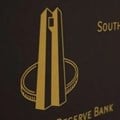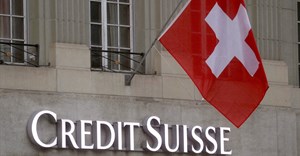
Subscribe & Follow
Jobs
- Financial Advisor Johannesburg
- Expert Analyst - Green Finance Cape Town
SA money market a saver's haven for investors

Per the South African Reserve Bank (Sarb), the extent to which it will keep adjusting the repo rate higher will depend on how confident it is that SA consumer price inflation (CPI) is getting closer to its target of 4.5% year-on-year, with the latest data print for February CPI at a still-elevated level of 7%.
As the impact of load shedding bleeds into an elevated cost of production and wreaks havoc on food retailers’ business operations, food inflation is also garnering more attention. The Sarb has remarked on several occasions that SA food price inflation is rising at a much faster pace than their models suggested, most recently at 14% year-on-year in February.
Key in the Sarb’s decision to keep raising rates has also been the dismal state of our trade balance, which measures the value of our exports less our imports. This has swung sharply into deficit given the decline in SA exports as platinum group metal prices weaken and mining production volumes are hampered by load shedding and rail failures.
A “trade deficit” or “current account deficit” implies that more currency is being spent by means of imports than those that are being brought into the country by means of exports, and it requires foreign financing to plug the gap. This, in turn, requires the Sarb to be sensitised to the factors that drive foreign capital flows into the country – perhaps the most important of which is the attractiveness of SA interest rates as an investment destination.
Against the interest rates of Mexico and Brazil at 11% and 13.8% respectively, it implies that the Sarb has had some wood to chop to get SA in the running. On a real (inflation-adjusted) basis, SA’s overnight rate of just 0.75% is also meek versus those of Mexico (3.4%) and Brazil (8.2%). As a result of the Sarb’s interest rate hikes, one-year bank money market instruments traded to as high as 9.1%, helping our Money Market Fund to raise its weighted average yield.
Protecting the rand and inflation
The Sarb is quick to acknowledge that SA is experiencing the lowest growth period in our modern history, marked most recently by the widespread failure of basic infrastructure such as electricity, roads, rail and water. That being said, even if the Sarb did have a “growth mandate”, SA’s problems arise from structural constraints to growth and are not issues that the blunt instrument of monetary policy can address. The Sarb has an inflation-targeting mandate and must act to protect the rand and inflation so that the incomes of our neediest are not eroded.
By contrast, the US Federal Reserve (Fed) is playing with a very different set of variables. A popular market mantra over the last year has been: “The Fed will keep hiking interest rates until something breaks". In the last quarter, something did indeed break, and that something was several US banks.
As interest rates continued to rise in the US, the market value of Silicon Valley Bank’s bonds fell to such a great degree that the bank became insolvent – meaning that the mark-to-market value of its assets fell below that of its equity. Optically, however, things appeared to be fine because, very importantly, the bank had designated a disproportionately large portion of these securities as “hold to maturity” assets. This means that they were not required to mark them to current market prices.
While it is common practice for banks to own some “hold to maturity” assets, this is typically a small portion of the bank’s asset base, and they will use interest-rate derivatives to hedge out their risk to rising interest rates, even if this comes at a cost – something which Silicon Valley Bank did not do.
The death knell for the bank was when their concentrated group of venture-capital depositors caught wind of the fact that trouble was afoot and pulled their deposit cash in unison – forcing the bank to sell Treasury assets and to realise the concealed mark-to-market losses in order to generate liquidity to pay out depositors.
Even though idiosyncratic factors, like these banks’ poor risk management frameworks, are partly to blame, the market concluded that the impact of rising interest rates on these banks’ Treasury holdings was simply too much to bear, and has subsequently priced for the Fed to begin cutting interest rates.
SA banks resilient
Important to note is that South African banks, by contrast, remain well capitalised, hold sizeable buffers of high-quality liquid assets, and have large interest-rate hedging programmes alongside robust risk-management practices. SA banking regulations require our banks to adhere to far more stringent risk limits than those required of the US regional banks that have found themselves in troubled times.
A final thought is that while some would comment that SA simply “follows” the interest-rate moves of the US, the Sarb in fact began hiking interest rates more than a quarter ahead of the Fed back in 2021. While the Sarb remains sensitised to the level of South Africa’s real rate of interest within the context of global financial rates, it retains independence of thought from offshore central-bank players and was ahead of the curve in terms of acknowledging the risks of inflation persistence. Ours is not a central bank to be caught sleeping at the wheel, and we should be proud for it.












